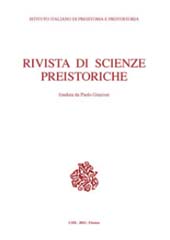Il castelliere protostorico di Udine : datazioni radiometriche e successione delle fasi insediative nell'ottica del popolamento del Caput Adriae tra Bronzo medio e Bronzo finale
P. 1-19
The Castelliere of Udine, probably extended over an area of about 10 hectares since its earliest phases of occupation, is the largest fortified settlement in Friuli. Recent 14C analyses suggest that the site was occupied at least since the 15th century BC, i.e. since the Middle Bronze Age 2 (Middle Bronze IIA-IIB). Such a date is also supported by pottery materials retrieved from several findspots within the urban area. Recent core drilling carried out on the Castle Hill (140 m asl), reaching the base ground (located between 111 and 109 m asl), suggested that the Hill was completely erected by man as early as ca. 1400 BC. Such an imposing mound, 30 m high and approximately 150 metres in diameter at the base, must have required the mobilization of substantial manpower.
This evidence, along with the exceptional size of the settlement, supports the leading role of Udine in the Bronze Age settlement system of Caput Adriae, according to what has been previously argued by scholars working on the protohistory in north-eastern Italy. The investigations carried out in 2020 and 2021 in the centre of the city have provided important information not only about the chronology of the site, but also regarding the presence of specialised working areas, allowing a comprehensive definition of the occupation phases of the village. The context of Palazzo Dorta, located on the southern slopes of the Castle Hill, has indeed yielded an 'in situ' archaeological sequence spanning the Middle Bronze and Early Recent Bronze Ages obliterated by gravel deposits fallen down the slope of the Hill.
This event could be indicative of a caesura between Recent Bronze Age 2 and the Early Final Bronze Age, when the structure of the Hill is no longer controlled. This critical phase may have already been overcome by Final Bronze Age 2, as shown by the context of Via Mercatovecchio, which signals the extensive reoccupation of the hill fort area. This inhabitation revival is accompanied by a substantial change in the ceramic repertoire, which clearly refers to the cultural groups of the south-eastern Urnfields, in particular to continental Slovenia. It is possible that these factors are interconnected and that the extensive reoccupation of the village is to be related to the arrival of new groups from the south-eastern Alps, as it has been already proposed to explain the more extended patterns of change in the Friulan region between Recent Bronze Age 2 and the early Final Bronze Age. [Publisher's text]
Fa parte di
Rivista di scienze preistoriche : LXXIV, 2024-
Articoli dello stesso fascicolo (disponibili singolarmente)
-
-
Informazioni
Codice DOI: 10.32097/1218
ISSN: 2282-457X
PAROLE CHIAVE
- età del Bronzo, datazioni 14C, Caput Adriae, tipologia ceramica
- Bronze age, 14C dates, Caput Adriae, pottery typology


